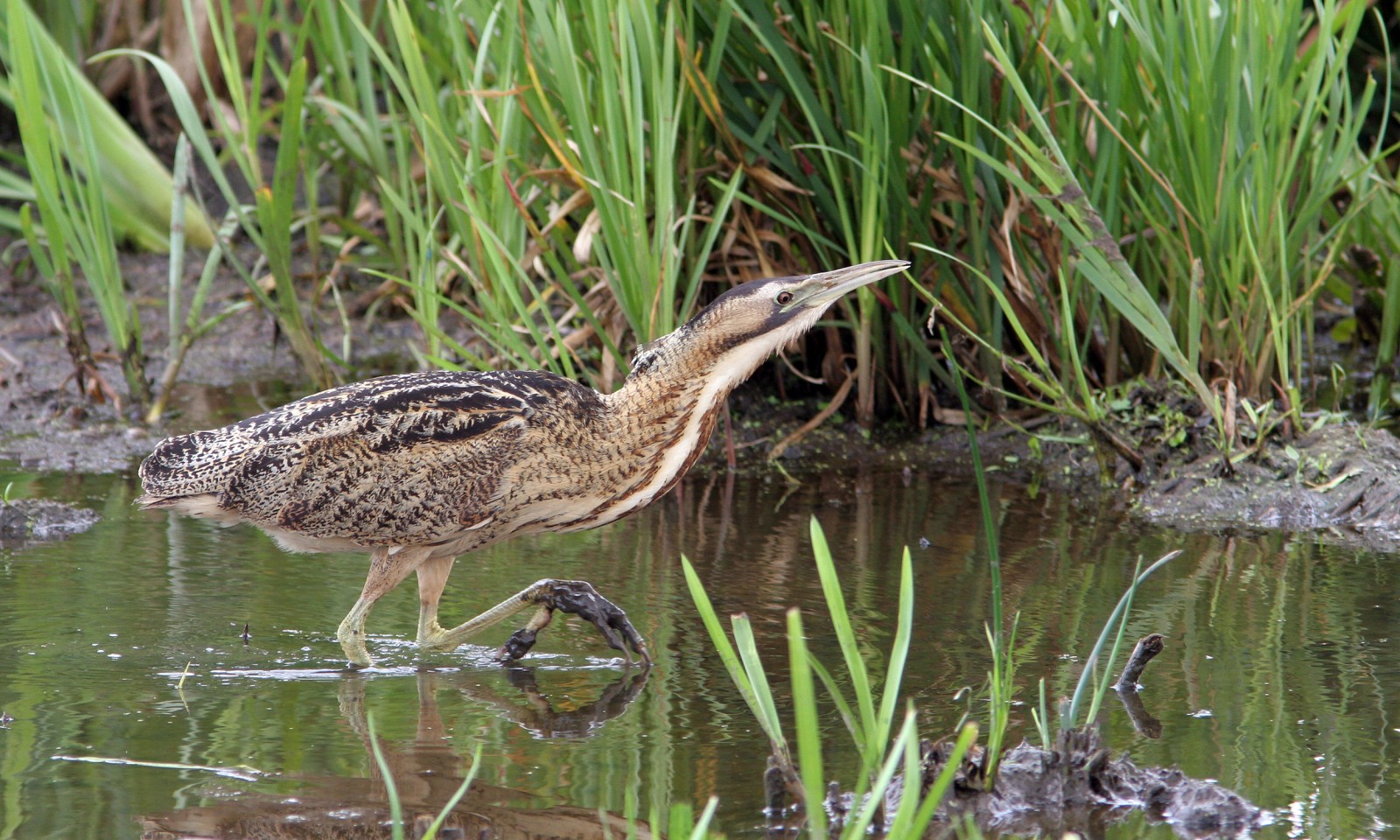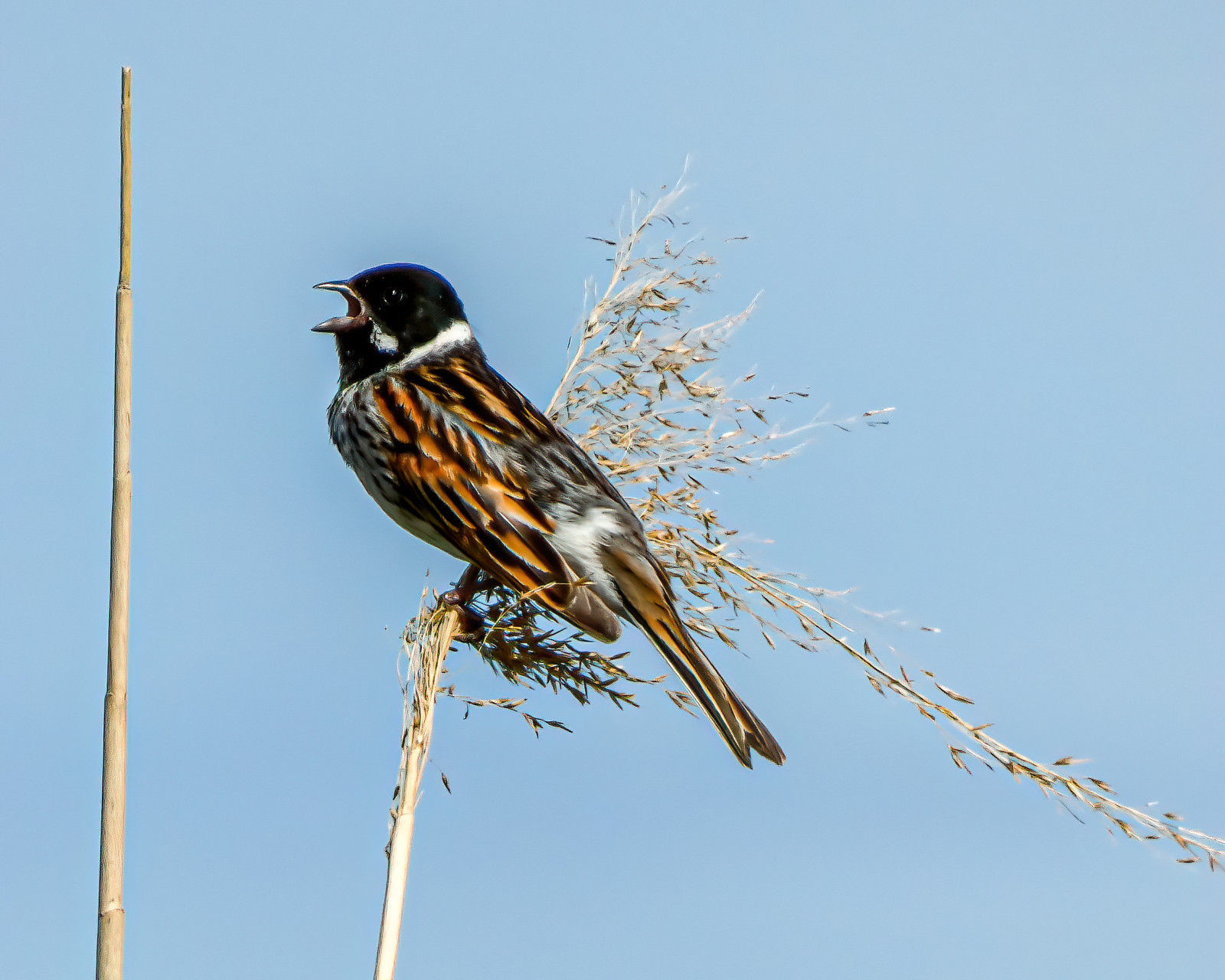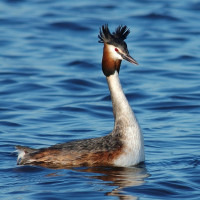Description
L'Étang Neuf is an important site for the wintering and reproduction of water birds. In the fall, keep an eye on the bushes, the passerines often stop there to stock up on fat during their post-nuptial migration. At the end of August and September look for the Purple Heron on the wooded bank. Check the pond for Black Tern or Osprey flying over. If the water levels are not too high, look at the mudflats.
In winter (beware of disturbances: site hunted between September and January), you will scan the opposite bank to check that there is not a Great Bittern hidden in the vegetation. The numbers of ducks and waterbirds are variable but generally you will observe: Common Pochard, Tufted Duck, Common Teal, Northern Shoveler, Eurasian Wigeon. Some rarities have already been observed: White-headed Duck, Slavonian Grebe, Blue-winged Teal, Red-throated Diver, as well as the 3 species of Merganser.
In the spring, you will observe the Great Crested Grebe, Little Grebe and Eurasian Coot parading and building their nests. Tufted Duck and Common Pochard also nest on the site. End of March, beginning of April, it is the good period to see a Garganey. A few pairs of Reed Warbler and Reed Bunting nest in low numbers at the tail of a pond. The 5 species of Woodpeckers nesting in the department are present in the town, only the Middle Spotted Woodpecker has not yet been recorded on the site. The Common Kingfisher must not be far from the dike on the side of the road, it is one of his favorite fishing spots!
_________________________
Français: Étang à la propriété de la com-com de l'Ernée, d’une superficie de 56 hectares, est l’une de perles naturelles du département, un site écologique majeur. Avec presque 200 espèces d’oiseaux recensées, l’étang neuf de Juvigné représente un des plus importants sites pour l’hivernage et la reproduction des oiseaux d'eau notamment.
A l'automne, surveillez les buissons et à la saulaie en queue d'étang, les passereaux s'y arrêtent souvent pour faire des réserves de graisses pendant leur migration post-nuptiale. Fin août et septembre cherchez le Purple Heron sur la berge boisée et dans la mégaphorbiaie de la rive oposée, il est pas impossible qu'il s'y cache. Vérfiez qu'il n'y ai pas une Black Tern ou un Osprey qui survole l'étang. Si les niveaux d'eau ne sont pas trop élevés regardez les vasières le long de la cariçaie peut-être qu'un rallidé s'y cache...
En hiver (attention dérangement : site chassé entre septembre et janvier), vous scruterez la cariçaie sur la berge opposée pour vérifier qu'il n'y ai pas un discret Great Bittern dissimulé dans la végétation. Les effectifs d'anatidés et oiseaux d'eau sont variables mais généralement vous observerez : Common Pochard, Tufted Duck, Common Teal, Northern Shoveler, Eurasian Wigeon... Quelques raretés ont déjà pu être observées : White-headed Duck, Slavonian Grebe, Blue-winged Teal, Red-throated Diver, etc, ainsi que les 3 espèces de Harles.
Au printemps, vous observerez les Great Crested Grebe, Little Grebe et Eurasian Coot parader et construire leur nid. Tufted Duck et Common Pochard nichent aussi sur le site. Fin mars, début avril, c'est la bonne période pour y voir une Garganey. Quelques couples de Reed Warbler et Reed Bunting nichent en faibles effectifs en queue d'étang. Les 5 espèces de Pics nicheurs dans le département sont présent sur la commune, seul le Middle Spotted Woodpecker n'a pas encore été mentionné sur le site. Le Common Kingfisher ne doit pas être bien loin de la digue sur le bord de la route, c'est un de ses postes de pêche préféré !
Details
Access
On the D165, leaving Juvigné in the direction of Saint-Hilaire-du-Maine, drive about 1.5 km and turn left at a place called "la Boulaie". You will find a car park directly on your left at the edge of the pond. On foot you will follow the pond, making a few stops to scan the pond before going to observe from the ornithological observatory. The circular route that is shown on the map is 5 km.
_________________________
Français: Sur la D165, en quitant Juvigné en direction de Saint-Hilaire-du-Maine, roulez environ 1,5 kms et tournez à gauche au lieu-dit ''la Boulaie''. Vous trouverez un parking directement sur votre gauche au bord de l'étang. A pied vous longerez l'étang, en faisant quelques arrêts pour scruter l'étang avant d'aller observer depuis l'observatoire ornithologique.




